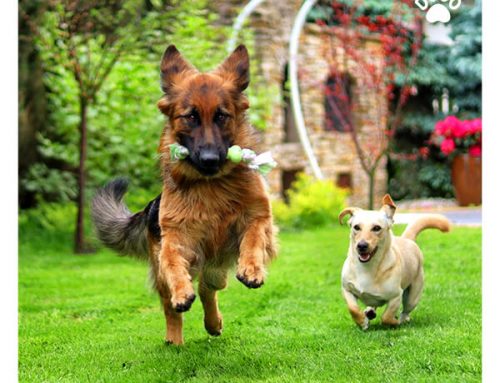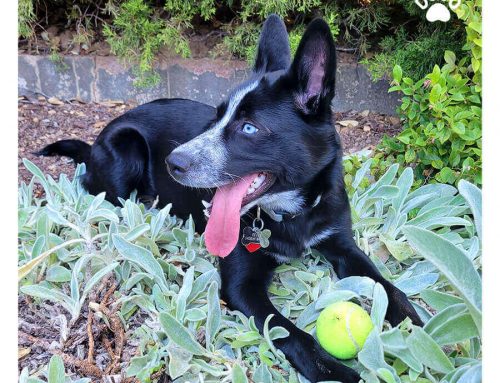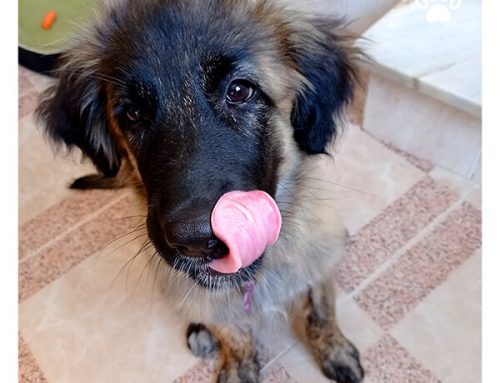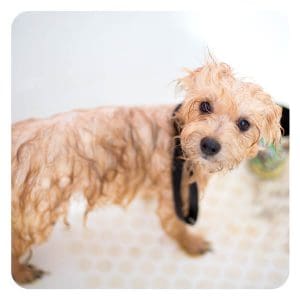
To Bathe or Not to Bathe?
The short answer is: Yes, but. An oily secretion called sebum is produced at the roots of dogs’ fur follicles, giving their fur a glossy appearance and keeping their skin moisturized. Washing your dog keeps their skin and fur healthy by reducing dander and dead skin, but doing it too often might repel this oil and its benefits.
How Much is Too Much?
The answer here is more individual and can be somewhere between once a year to once a month.
While some breeds don’t need more the 1-2 washes per year, others can benefit from one every three months. If your dog is among the latter, you can wash them once a month using a mild soap. However, if they seem clean and their fur is silky, don’t rush to wash.
Still not sure? Consult with a professional groomer or your vet.
Bath-tized: In the first 3 months of their cute existence, puppies don’t need to be washed. It is essential to note that puppies should not be washed during their first three months of life. During this period, puppies’ immune systems are still developing, and they are adjusting to their new environment. It is best to wait until they are a bit older to start introducing them to baths. Instead, use a damp cloth to clean their paws and underbelly gently. Once they are six months old, you can start introducing them to baths gradually.
Let It Soak: Tips for Bath Socialization

- Breakfast in bath – give your dog food or treats in the dry bath (or shower /sink).
- Solid ground – place an anti-slip mat under your dog’s paws to avoid slipping.
- Low tide – fill the bath with a bit of water. When they dip their paws, praise, play, or reward them.
- Peanuts – to encourage your dog to linger longer, spread peanut butter on the tub’s sides.
- Pull in the puddle – play with your dog as they paddle.
- Exit sign – don’t force your dog to stay inside the water – they need to know that they can get out.
- Hot winds – before blowing them dry for the first time, turn on the hair dryer to habituate them to the noise.
Socializing your dog to enjoy bath time is essential for maintaining good hygiene and health. However, it is not always an easy task, especially if your dog has had a negative bath experience before. To help ease them into it, start slowly, using positive reinforcement to encourage them to get comfortable in the tub. You can also try playing soothing background music to help them relax. If your dog is anxious, try using a calming pheromone spray or diffuser to create a relaxing environment.
Another helpful tip is to use a treat-dispensing toy in the tub to keep your dog occupied and distracted while you wash them. You can also use this time to groom them, such as brushing their fur, trimming their nails, and cleaning their ears. Remember to go at your dog’s pace and be patient with them. With time and patience, your dog will learn to enjoy bath time and see it as a fun and rewarding experience.
Bubble-up, It’s Bath Time!
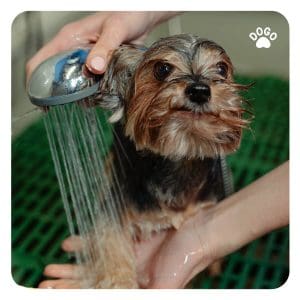
- Several towels for the dog and the floors
- A washcloth to clean their face
- Dog’s shampoo
- Hair dryer
- Treats
- Shower-head (recommended)
Wash your dog with warm water, and apply a little soap. Protect their eyes from shampoo and the inner ears from water splashes.
Thoroughly rinse all the shampoo from the fur. Dry your dog as best as possible using towels and a hair dryer. If you’re using a humans-hair dryer, set it to medium or cold wind.
Once your dog is dry, praise and give them a treat so they’ll remember that there’s always a treat at the end of the tub.
If your dog is stressed, wash one body part at a time. If that’s still too much for your pooch, that’s alright – maybe they need more time to let it sink.
Overall, maintaining good hygiene and health for your furry friend is crucial, and bath time plays a significant role in achieving this. By following these tips and introducing your dog to baths gradually and positively, you can help them develop good hygiene habits and enjoy bath time.




